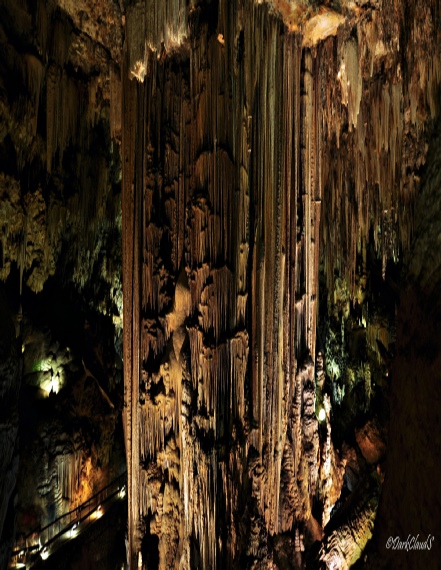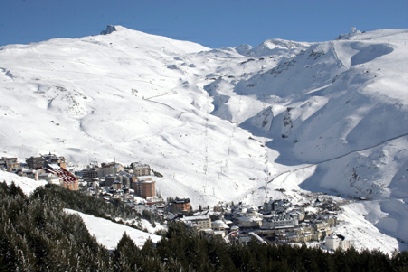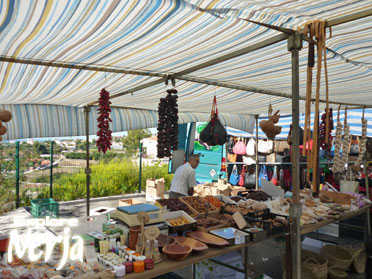


Nerja, on the Costa del Sol, is a seaside resort of sandy coves sheltered by the impressive Sierra de Almijara mountains and is often referred to as 'The Jewel of the Costa del Sol'.
A temperate climate means that Nerja is a great place to visit at any time of year.
There are many attractions available in Nerja and the surrounding area.




Excited by their find, they went back to tell their family, friends and teachers but it wasn’t until the cave was visited by a medical expert and a photographer that the true extent of their discovery became apparent. The first photographs of the caves were published in the Málaga newspaper ‘Sur’ about 100 days after their discovery.
The Nerja Caves were officially inaugurated on June 12th 1960 and opened to the public.
Information on opening times and prices can be found here.
Located on the outskirts of Maro, approximately 10 minutes drive from Nerja, the magnificent Nerja Caves – Cuevas de Nerja – are a series of huge caverns stretching for almost five kilometres and home to the world’s largest stalagmite, a 32 metre high column measuring 13 metres by 7 metres at its base.
On January 12th 1959, five local lads from the village of Maro decided to go hunting for bats and headed for a pothole known locally as ‘La Mina’ where they spent the night watching a great number of these creatures exiting through the hole in the rocks.
The boys decided to return the next day, taking with them some tools to dislodge a couple of stalactites in the entrance. Once inside, they found themselves able to descend to a huge cavern where they discovered a number of skeletons next to some ceramic pottery.
Frigiliana
Frigliana is located approx 6km north of Nerja and is less than a 15 minute drive away.
The village is a maze of narrow, cobbled streets lined with white-
Maro
Maro is a quiet, picturesque little village just outside Nerja on the old N-
The focal point is the village square, Plaza de las Maravillas which is dominated by the 17th century church, La Iglesia de Nuestra Señora de las Maravillas – Church of Our Lady of Sorrows.
Sierra Nevada
The Sierra Nevada is a mountain range in the region of Andalucia, provinces of Granada and Almería in Spain and only about an hours drive away from Nerja. It contains the highest point of continental Spain, Mulhacén at 3,478 metres (11,411 ft) above sea level.
It is a popular tourist destination, as its high peaks make skiing possible in one of Europe's most southerly ski resorts, in an area along the Mediterranean Sea predominantly known for its warm temperatures and abundant sunshine. At its foothills is found the city of Granada and, a little further, Almería and Málaga.
Parts of the range have been included in the Sierra Nevada National Park. The range has also been declared a biosphere reserve.

The Tuesday market is made up of a wide range of stalls. You’ll find the typical sunglasses, watches and leather goods alongside fruit and veg, clothing of varying qualities, shoes, ceramics and local produce characteristic of the Axarquia area.
The Sunday market is a mix between a car boot sale and flea market and depending on your tastes could be a treasure trove of fascinating items or a load of old junk but it’s popular with locals and gets a good following, particularly in the cooler months.
Nerja Caves -

The area was formally the site of a fortress which was finally demolished in 1812 to prevent it from falling into the hands of the French during the Spanish war of Independence. Following an earthquake that devastated the area in 1884, King Alfonso XII visited the region and during a visit to Nerja remarked that it was the Balcony of Europe. Obviously the name stuck and the Balcón de Europa was born and to commemorate this moment in the towns history you'll find a bronze statue of the King himself looking out to sea on the eastern side of the Balcón.
Street Markets
Nerja has two markets per week, both located in the same area to the north east of the town centre at the end of Calle Cisne and both starting at around 10am and continuing until the midday heat of 2pm.

This is probably Nerja’s principal tourist beach and as a result offers the most services of all the nearby beaches.
There are numerous bars and restaurants located on the beach front, from traditional outdoor Chiringuitos to more international establishments. Immediately behind the beach you’ll find a paved promenade, followed by a line of restaurants / public areas, a road that runs the length of the beach (which also includes parking) and a further line of restaurants and bars.
Burriana beach
The beach is well equipped, is covered by lifeguards, regularly cleaned and suitable for families. It also boasts blue flag status.
Balcón de Europa
Undoubtedly the heart of Nerja and one of it's main symbols the Balcón de Europa is almost always included in directions when trying to find anything in the town.
Alhambra / Granada

Less than an hour and a half drive, the Alhambra is the red fortress which sits on the hill overlooking Granada and covers an area of approximately 140,000m². Once the residence of the Muslim rulers and their court, it is now one of Spain's major tourist attractions. There are three parts to the Alhambra: the ornate Nazrid Palaces (you will be given a time to enter these), the Alcazaba (the battlements) and the Generalife (the gardens). Alhambra tickets are valid for a half day if you choose the general visit option.
The usual route around the Alhambra is 3.5km long and it takes 3 hours to visit the 3 areas of the Alhambra complex. There is a large car park and plenty of restaurants where you can get inexpensive meals and snacks.
Port of Málaga
With modern shops, restaurants and bars bordering one side of the central orange tree-
After 13 years of planning and negotiations, an 80-
